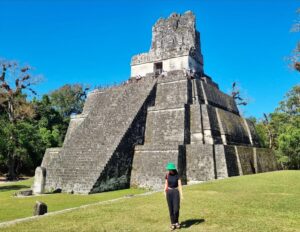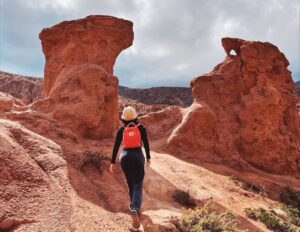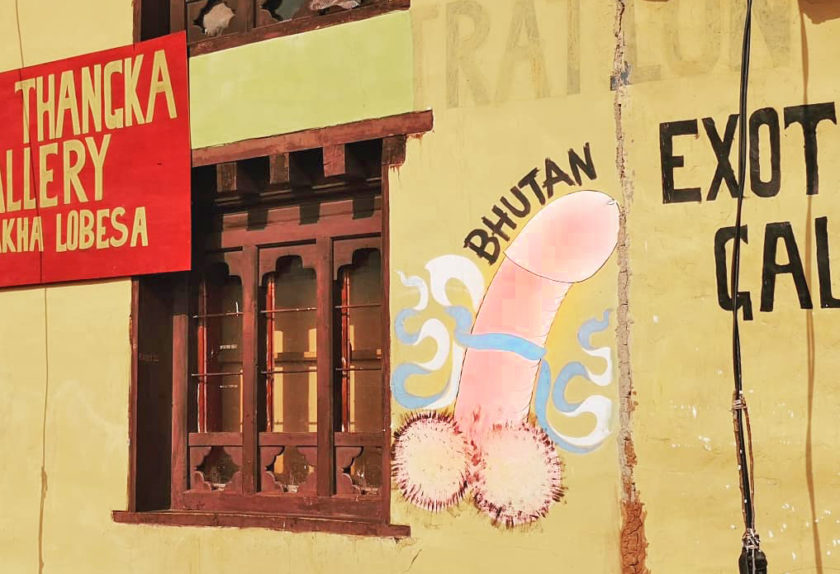
In a remote part of the world, lies the ancient Kingdom of Bhutan. Surrounded by the mighty Himalayas and bordering India and China, this landlocked Buddhist country is still shrouded in a veil of mystery. This is why it’s surprising to learn that in this obscure kingdom, it continues to boldly practice an age-old tradition of worshipping the most curious of objects: the phallus.
Yes, I said phallus
When I first noticed a giant, carved penis suspended over the entrance of a storefront in Thimphu, the capital of Bhutan, I said to myself, “Whaaaaaaat,” and then blew it off as a strange, one-time thing.
But the next day, I saw more and more, and in some areas I was bombarbed by a schlong on every street. The twelve year-old in me wanted to laugh every time I saw a humongous ejaculating penis attached to a hairy scrotum and dangling above a doorway, but I knew it must have some cultural significance, so I asked someone.
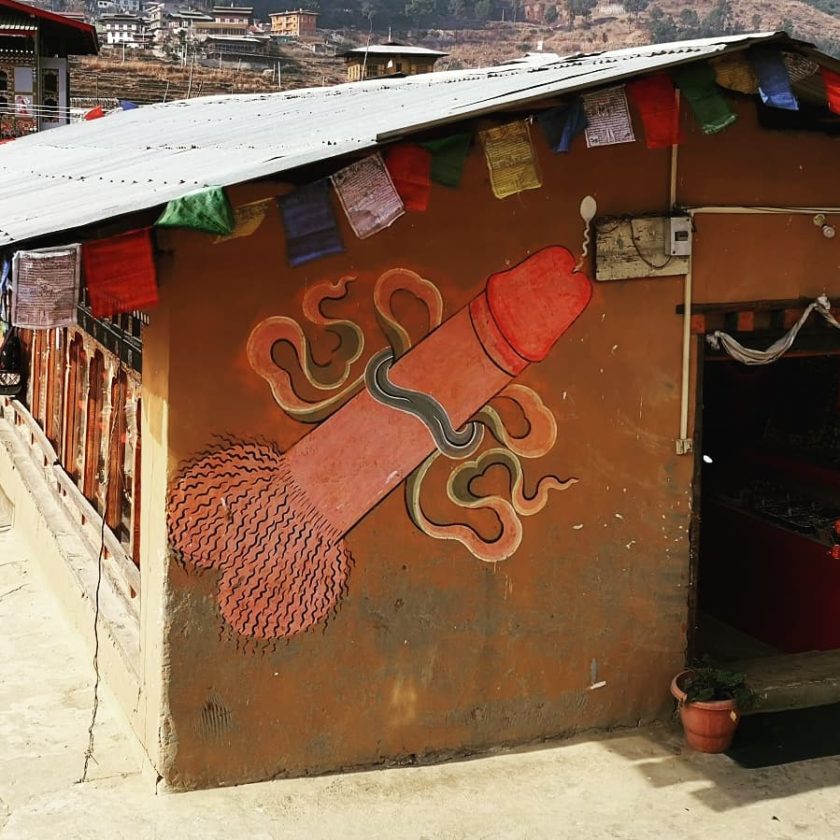
It's all down to a monk named Drukpa Kunley
The surprising sight of the phallus symbol adorning homes and storefronts across Bhutan can be traced back to a monk named Drukpa Kunley. In the late 15th century, he came to Bhutan from Western Tibet to help facilitate the spread of Buddhism. To captivate his audience he often used outrageous behaviour to dramatise his teachings, earning him the nickname ‘Divine Madman’.
His unconventional and outright bizarre methods of teaching also earned him the nickname, The Saint of 5,000 Women. Like many men, he was known to be fond of beautiful ladies and good wine, and from all over Bhutan, women came to seek his blessings. Men also knew to bring women or wine if they too wanted his blessings – bringing both would be even better. The Divine Madman’s theory was simple: he could help to enlighten others while maintaining healthy relationships with many, many, many, many women. A true visionary, right…?
Through Mr. Drukpa’s exploits, it’s easy to see why the phallus symbol in Bhutan has come to represent fertility. There’s another story though, explaining how Drukpa Kunley’s phallus in Bhutan also came to symbolize protection. The legend is that three demons were terrorising people on Dochula Pass. (If you’re visiting Bhutan, you’ll almost certainly cross this mountain pass on your way from Thimphu to Punakha.) When he showed up to confront the three demons, they combined into one and took the shape of a giant, ferocious dog.
The Divine Madman had to think fast. He didn’t have the usual weaponry, no sword or knife, no bow and arrow, so he used the only weapon he had left… his legendary penis. And so, after this battle, his one-eyed monster was given its own name – The Thunderbolt of Flaming Wisdom!
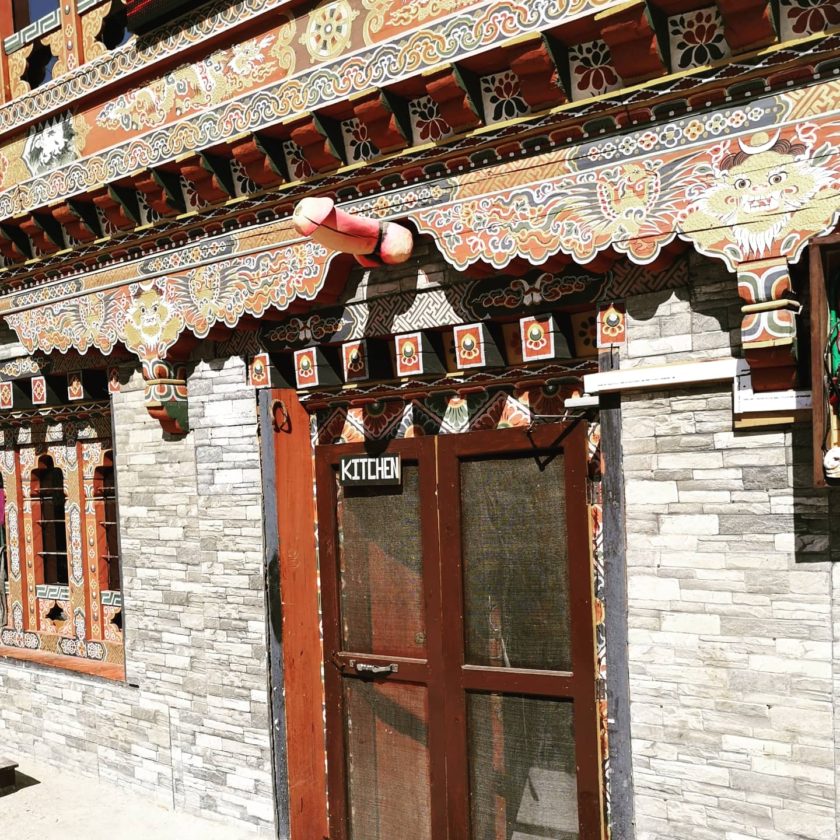
A temple built in honour
He buried the dog monster near Punakha and built a chorten (Bhutanese stupa) over it. Shortly after, a temple named Chimi Lhakhang was built behind the chorten to honour their fearless phallus-wielding hero . The name of the temple was inspired by the event, ‘Chi Mi’ means ‘no dog’ and ‘Lhakhang’ means ‘temple’.
Over the past 500 years, Chimi Lhakhang has become a place where couples come from all over the world when they are unable to conceive a child and wish for help. Upon arriving at the temple, they make their desire known to the resident monk, who gives them a blessing and walks them through a ritual in which a giant wooden phallus and a 500 year-old bow and arrow are lightly tapped on the couples’ heads.
This is all done on the condition that one of two things will happen when the miracle baby is born, regarding the baby’s name.
I call my baby... Kunley
Ideally, the couple bring the new baby back to the temple so that the baby can be blessed and then named according to Bhutanese tradition, which means the monks choose the baby’s name. However, if the family is unable to bring the newborn back to Bhutan, they agree to name the child after Drukpa Kunley.
I mean, that’s one way to really keep a tradition going, right?
When you’re inside the temple, facing the altar, there’s a window ledge to your left. On this ledge there are some photo albums filled with postcards and photos of new families from all over the world who received blessings at Chimi Lhakhang after not being able to conceive. Lots of Kinleys, Kunleys, Kuenleys, boys and girls, so if you encounter one of these names, ask if their parents have been to Bhutan!
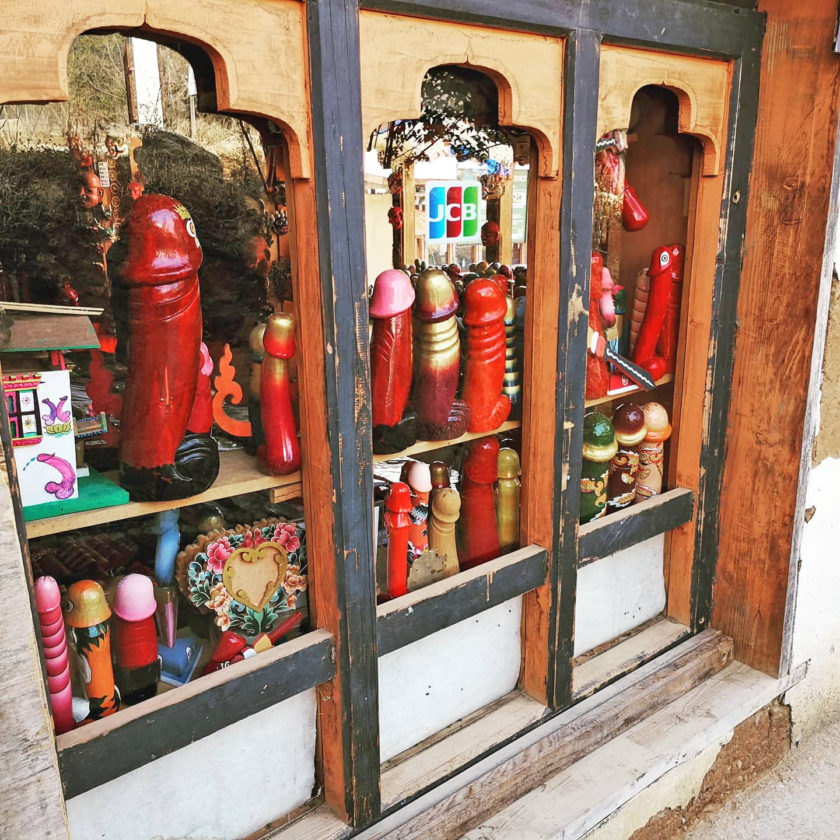
Other depictions of the Divine Madman
In addition to being a spiritual lady magnet and all-round demon fighter, he was not a fan of wearing many clothes (I don’t think he’d get far walking around in society today). So when he’s depicted in intricate wall murals seen inside temples throughout Bhutan, he is easy to spot because he’s the only one never wearing a shirt. In one hand he often has a cup of wine, and in the other, he carries a bow and arrow. Archery happens to be the national sport of Bhutan. Coincidence? I like to think not.
Apparently the younger generation aren’t as crazy about all the penis art everywhere like their elders. Bhutan’s older generation take the phallus symbol seriously, as both representative of protection and fertility.
Personally, I hope the legend of Drukpa Kunley will continue to live on in the form of giant penises painted on walls for many future generations to come.
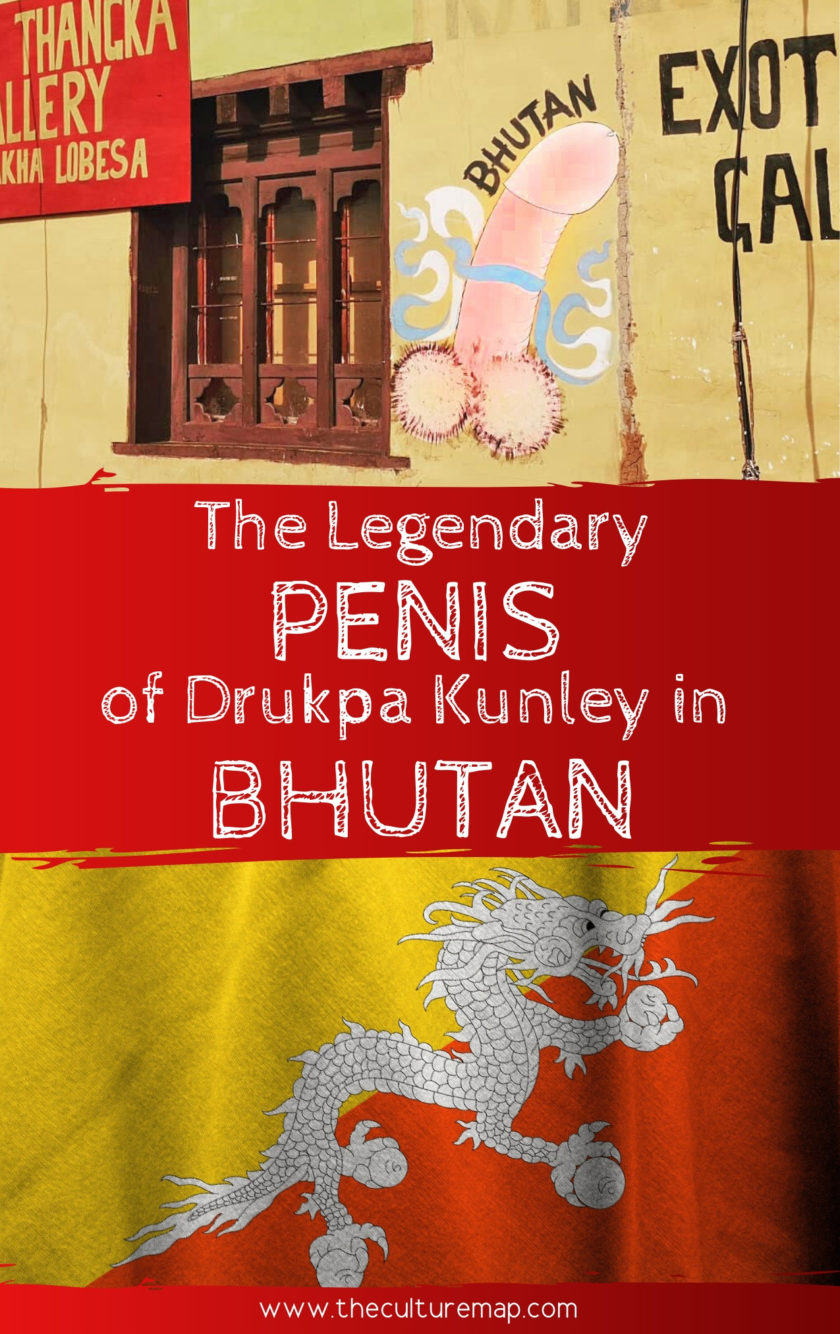
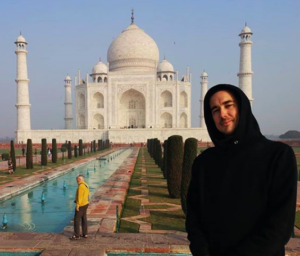
Sean Gauthier
Sean is from the US and has spent most of his life working in restaurants and bars. He is obsessed with travelling overland and is about 900 days into his lifelong dream of travelling around the world without flying. He is currently in Bangladesh, keep up-dated with his travels on Instagram @seangauthier.



